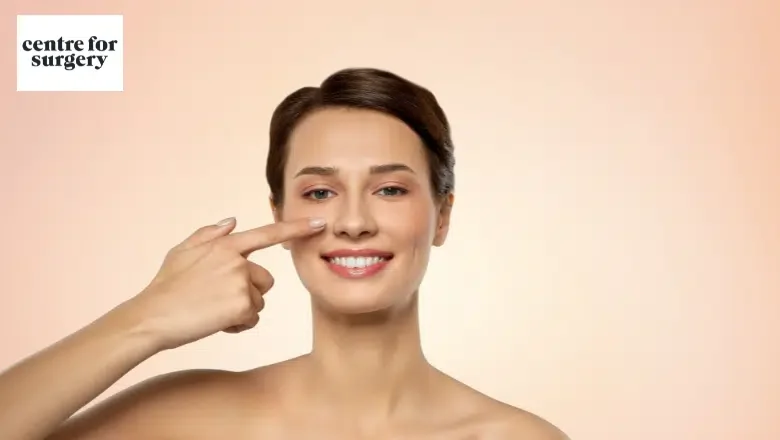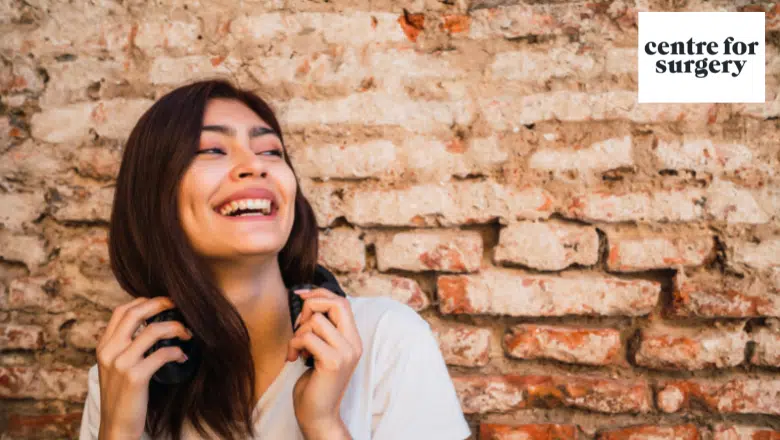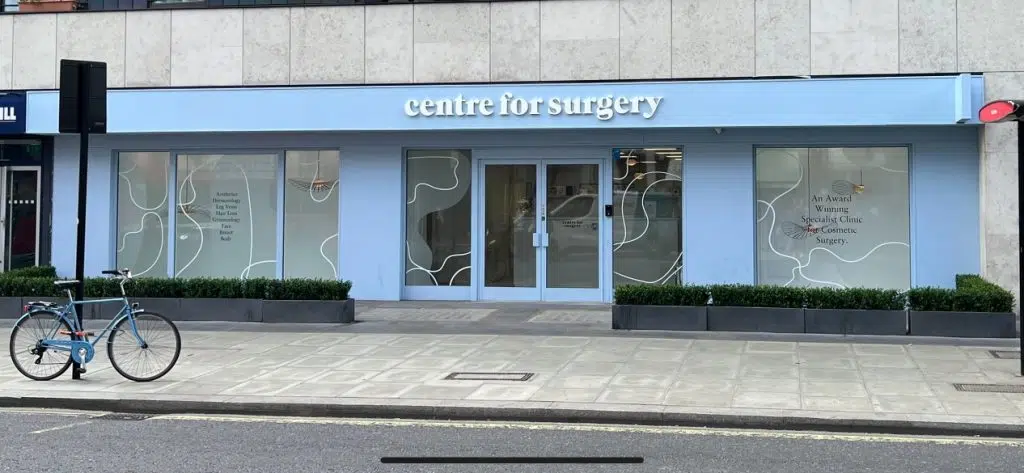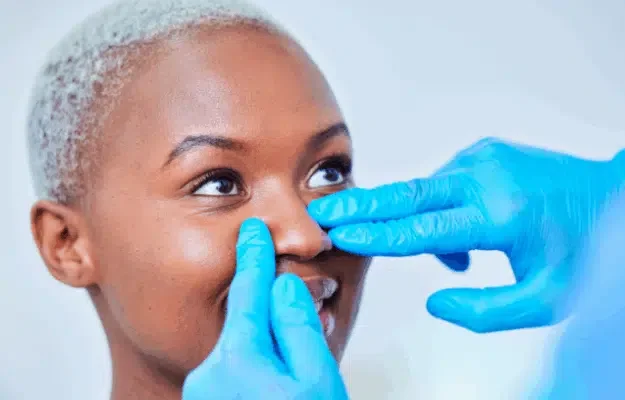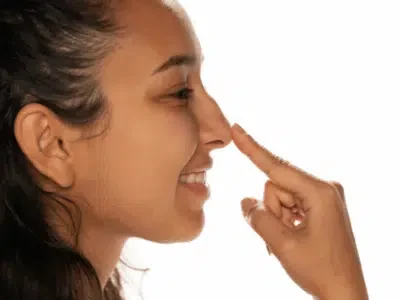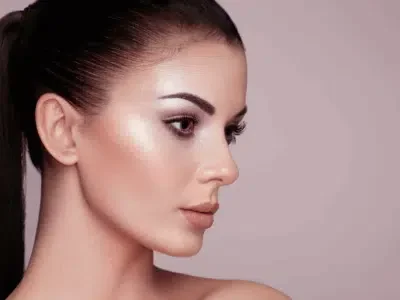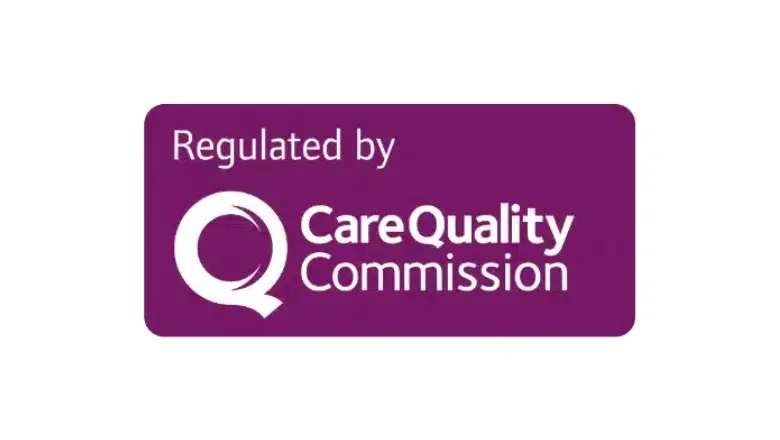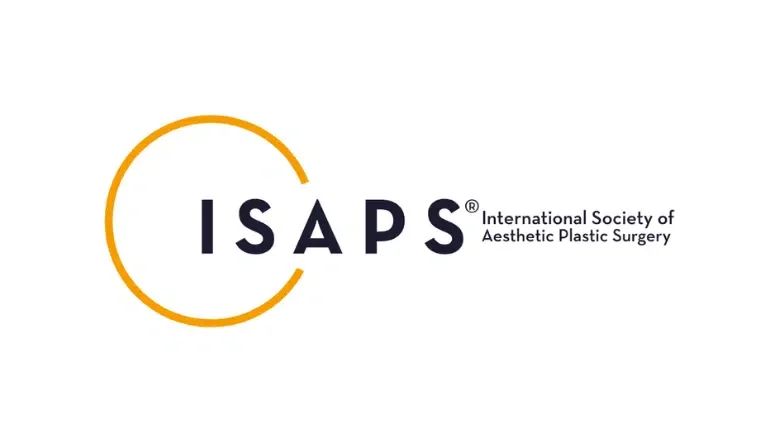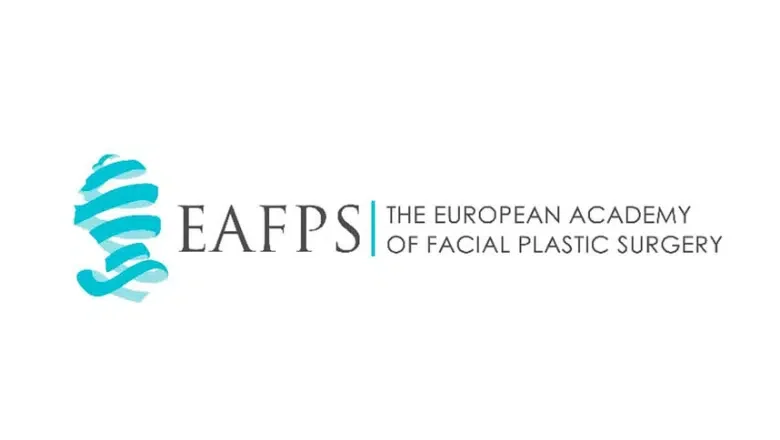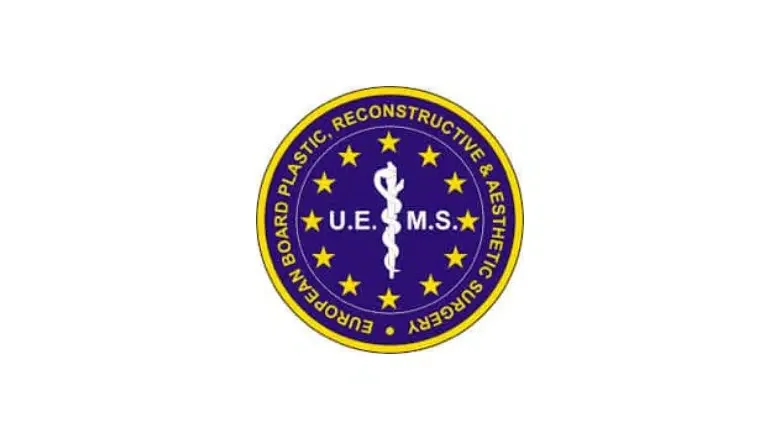Nose job surgery describes a range of nose surgery procedures, including rhinoplasty, septoplasty, nostril reduction and tip plasty surgery. Nose surgery is designed to improve the appearance and function of the nose. Centre for Surgery is considered the leading plastic surgery clinic in London and is home to some of the best rhinoplasty surgeons in the UK. Here, we answer your most commonly asked questions about all aspects of nose reshaping surgery.
RELATED: Rhinoplasty 101
NOSE SURGERY FAQs
What are the most common reasons to get a nose job?
Common reasons to have a Rhinoplasty include:
- A hump on the nasal bridge
- Prominent radix
- Bulbous nose tip
- Excessively big nose
- Crooked nose
- Over or under-rotated nasal tip
- An excessively small nose that appears out of balance with the face as a whole
RELATED: Is a nose job worth it?
What are the different nose problems?
People often face a variety of nose-related problems, which can be cosmetic or functional in nature. These issues can significantly impact one’s quality of life and may require medical attention to resolve.
A deviated septum occurs when the nasal septum, the cartilage and bone dividing the nostrils, is misaligned. This misalignment can cause breathing difficulties, snoring, and even sleep apnea, making it hard for individuals to get restful sleep.
Nasal polyps are non-cancerous growths that form in the lining of the nasal passages or sinuses. These growths can lead to chronic sinusitis, hinder breathing, and reduce the sense of smell, affecting daily activities and overall health.
Allergic rhinitis is an inflammation of the nasal lining triggered by an overreaction to allergens. This condition is marked by symptoms such as sneezing, nasal congestion, and itching, which can be quite bothersome.
Sinusitis involves the inflammation or infection of the sinuses, leading to nasal congestion, facial pain or pressure, and headaches. This condition can be chronic, causing persistent discomfort and requiring medical treatment.
Nasal obstruction refers to any blockage in the nasal passages that hampers breathing. This blockage can result from various factors, including a deviated septum, enlarged turbinates, or nasal polyps, all of which can significantly impact respiratory function.
Cosmetic concerns related to the nose are also common. People might be dissatisfied with their nose’s size, shape, or symmetry. Issues such as a dorsal hump, wide or flaring nostrils, a drooping or bulbous tip, and a crooked nose are typical concerns that can affect a person’s self-esteem and confidence.
Nasal fractures are another issue that can arise from trauma to the face. A broken nose can cause pain, swelling, and potential deformity, necessitating prompt medical attention to prevent long-term damage.
Nosebleeds, medically known as epistaxis, can result from dry air, injury, inflammation, or underlying medical conditions. These episodes of bleeding can be alarming and may require intervention if they occur frequently.
Rhinophyma is a skin condition associated with severe rosacea, leading to thickening and enlargement of the nose. This condition can be disfiguring and often requires medical treatment to manage its symptoms effectively.
Nasal valve collapse involves a weakness or narrowing of the nasal valve, making it difficult to breathe through the nose. This condition can severely affect respiratory efficiency and often requires surgical correction.
Is a nose job common?
A nose job, also known as a rhinoplasty, is one of the most popular facial plastic procedures carried out in the UK each year.
Will my nose get bigger?
Some people may find their noses could get bigger as part of the natural ageing process. Rhinophyma is a chronic skin condition primarily affecting men that can lead to the development of a large and bulbous nose.
What does a beautiful nose look like?
Nose aesthetics are subjective, and what one person finds beautiful may not be the same for another. However, in general, a nose that is in proportion to the face and looks balanced, natural, and harmonious with the other facial features is considered to be a beautiful nose. A nose that enhances the overall facial symmetry and enhances overall appearance is considered to be a beautiful nose.
RELATED: What Makes a Beautiful Nose?
In terms of specific characteristics, a straight and symmetrical nose with a well-defined nasal bridge, a refined tip, and well-defined nostrils is often considered aesthetically pleasing. A nose that is in proportion to the face, with a well-defined nasal bridge that is neither too high nor too low and a tip that is neither too wide nor too narrow, is also considered to be a beautiful nose.
What does a nose job involve?
A nose job is a surgical procedure involving reshaping the nose by surgically altering the underlying bone and cartilage. Incisions for rhinoplasty are most commonly made at the columella between the two nostrils, and this is known as an open rhinoplasty. The other common type of rhinoplasty is a closed rhinoplasty, with all incisions being made inside the nose only.
What is the difference between open and closed rhinoplasty?
Open rhinoplasty, also known as external rhinoplasty, is a surgical technique in which an incision is made on the columella, the strip of skin separating the nostrils, in order to access the internal structures of the nose. This approach allows the surgeon to have a clear view of the nasal anatomy and make precise changes to the underlying bones and cartilage. The surgeon can remove, reshape, or augment the nasal bones and cartilage to create the desired shape and size of the nose. This technique is often used for complex cases, such as severe nasal deformities, revision surgeries, or patients with thick skin.
The main advantage of open rhinoplasty is the increased visibility and accessibility to the nasal anatomy. With the open approach, the surgeon can have a clear view of all the nasal structures and make precise changes. This approach also allows for greater control and precision of the nasal tip, often the most challenging aspect of rhinoplasty. Additionally, open rhinoplasty can address functional issues, such as a deviated septum or a blocked airway, by changing the internal structures of the nose.
However, open rhinoplasty also has some disadvantages. One of the main drawbacks is the visible scar that is left on the columella. Although this scar is usually small and well-hidden, it can be a concern for some patients seeking a natural-looking result. Open rhinoplasty can cause more swelling and bruising than closed rhinoplasty, which can take longer to recover from.
On the other hand, closed rhinoplasty, also known as endonasal or internal rhinoplasty, is a surgical technique in which all incisions are made within the nostrils, avoiding any visible scarring on the outside of the nose. This approach allows the surgeon to access the nasal structures from the inside without making any external incisions. The surgeon can remove, reshape, or augment the nasal bones and cartilage through these incisions to create the desired shape and size of the nose. This technique is often used for simple cases, such as patients with a small hump, a droopy tip, or a slight deviation.
What is a nasal tip plasty?
A tip plasty is a surgical procedure that specifically focuses on altering the shape of the nasal tip. The procedure can be performed alone or in conjunction with other rhinoplasty procedures. The goal of tip plasty is to reshape the nasal tip to create a more aesthetically pleasing appearance.
There are several different techniques that can be used during a tip plasty, including:
- Cartilage reshaping: This involves reshaping the cartilage in the tip of the nose to create a more defined and symmetrical shape.
- Cartilage grafting: This technique involves adding cartilage from other areas of the body, such as the ear or rib, to the tip of the nose to provide additional support and shape.
- Suture techniques: Suture techniques can be used to reshape the tip of the nose by manipulating the underlying cartilage.
- Wedge resection: This technique involves removing a small wedge of cartilage from the nasal tip to change its shape.
- Alar base reduction : This technique reduces the width of the nostrils by removing a small amount of skin and cartilage from the alar base.
What is a preservation rhinoplasty?
Preservation rhinoplasty is a surgical technique that aims to preserve as much of the patient’s original nasal structure as possible while still achieving the desired cosmetic results. This approach is often used to correct minor deformities and asymmetries rather than making significant changes to the overall shape of the nose.
The goal of preservation rhinoplasty is to minimize the amount of tissue that is removed during the procedure while still achieving the desired aesthetic results. This is achieved by making small, precise incisions and using techniques such as an osteotomy (reshaping of the nasal bones), and cartilage reshaping. In addition, to preserve the natural structure and functions of the nose, the septum and tip support are also maintained.
The preservation rhinoplasty technique is often used for revision rhinoplasty cases, as well as for people who want to make subtle changes to their nose without drastically altering its shape. This technique is more complex and demanding than traditional rhinoplasty, but the results can be more natural-looking and the recovery time is generally shorter.
How do I prepare for a rhinoplasty consultation?
Here are some tips to help you prepare for a rhinoplasty consultation:
- Research your surgeon: Look for a facial plastic surgeon with experience in rhinoplasty. Look for before and after photos of their patients to get an idea of their work.
- Gather information about your medical history: Be prepared to share information about any previous nasal surgeries, medical conditions, and medications you are currently taking.
- Be clear about your goals: Think about what you would like to change about your nose and be prepared to discuss this with your surgeon. Bring pictures of noses that you like to the consultation.
- Ask questions: Prepare a list of questions for your surgeon, such as their qualifications, experience, and complications.
- Understand the risks and recovery: Make sure you understand the risks and recovery time associated with the procedure.
- Have realistic expectations: Understand that perfect results are not always possible. Your surgeon will give you an honest assessment of what can and can’t be achieved with surgery.
- Don’t hesitate to ask for a second opinion, especially if you are not comfortable with the surgeon or the proposed plan.
NOSE JOB RESULTS AND BENEFITS
Can a nose job affect facial appearance?
A nose job can transform the overall appearance of your face. A nose that is even moderately enlarged can have a significant effect on your overall facial appearance. A nose job can help to improve the overall balance of your facial features.
Will a nose job make me look beautiful?
Rhinoplasty surgery can help to reduce the size of the nose.
Can a nose job make me look younger?
A nose job may help you to look 2 to 3 years younger, although it is not carried out for facial rejuvenation and anti-ageing reasons.
How can I reduce the size of my nose?
The most effective and permanent way to reduce the size of your nose is to have a rhinoplasty.
Can a nose job make my nose smaller?
A nose job is the best procedure to make your nose smaller.
RELATED: How to make your nose smaller
Will a nose job affect my lips?
A rhinoplasty may temporarily affect how the upper lip appears during the early recovery period due to swelling. If the tip of the nose has been lifted as part of the surgery, the appearance of the upper lip will be enhanced.
Can a rhinoplasty change your face?
Rhinoplasty surgery can enhance your facial features.
Can rhinoplasty make my nose smaller?
A reduction rhinoplasty is commonly requested to reduce the size of a big nose.
Will rhinoplasty affect my smile?
Rhinoplasty may affect the position of the upper lip, which could alter your smile.
Can rhinoplasty eliminate snoring or sleep apnoea?
Rhinoplasty performed for functional reasons is beneficial to address breathing difficulties, snoring or sleep apnoea. It may be combined with other ENT procedures, such as uvulopalatopharyngoplasty to eliminate sleep apnoea permanently.
Can rhinoplasty affect my voice?
A nose job is not known to affect your voice.
AM I SUITABLE FOR NOSE SURGERY?
What is the minimum age to have a nose job?
We recommend being at least 18 years of age before considering a nose job, as the nose may still grow before this time. At Centre for Surgery, patients must be a minimum of 18 years of age to have a consultation or procedure.
What is the best age to get a nose job?
There is no ideal age to have a rhinoplasty, although most people who have it are often between the ages of 20 and 40
Am I too old for a nose job?
There is no upper age limit for rhinoplasty surgery. Patients should be in a good state of health with no chronic medical conditions and have realistic expectations of what can be achieved after surgery.
RHINOPLASTY PREPARATION
What is the best way to prepare for a nose job?
You should avoid taking any medicines containing aspirin as these can thin the blood and increase the risk of bleeding. Smoking should be stopped at least four weeks before surgery. Try to focus on eating a healthy diet and keeping well-hydrated before surgery. Organise at least one week off with your employer. You should follow the preoperative fasting instructions given to you by our clinical support team on the day of your procedure.
What should I avoid taking before rhinoplasty?
Avoid taking medicines containing aspirin, as these can increase the risk of bleeding. Do not smoke for at least four weeks before surgery, and avoid supplements containing vitamin E and all types of herbal supplements.
Should I shave before nose surgery?
You should avoid shaving your face at least 24 hours before surgery to minimise the risk of small cuts, which could increase the risk of infection.
What should I wear on the day of my rhinoplasty procedure?
You should wear loose, comfortable, cotton-based clothing buttoned from the front. Avoid wearing T-shirts or other similar types of clothing that have to be removed over your head.
RHINOPLASTY & NOSE SURGERY
How long does a nose job take to perform?
A nose job usually takes approximately 2 to 3 hours to perform, depending on the complexity of the surgery.
Will I feel anything during rhinoplasty surgery?
You will not feel anything during surgery as he will be given a general anaesthetic, which will make you completely unaware.
Will I be awake during nose surgery?
Most types of nose surgery are performed under a general anaesthetic, which means you will be asleep for the procedure. Alar base reduction can, in selected cases, be performed under local anaesthetic.
Can rhinoplasty be performed under local anaesthesia?
Due to the complexity of the procedure, we would not recommend having rhinoplasty under a local anaesthetic. However, at Centre for Surgery, we routinely perform rhinoplasty surgery under general anaesthetic. Certain types of nose surgery, such as alar base reduction, can be comfortably performed under a local anaesthetic.
Will I be able to have an awake nose job?
Alarplasty, also known as nostril reduction, is sometimes carried out under local anaesthesia, although a full rhinoplasty requires general anaesthesia.
Will I need to have my nose bone broken during rhinoplasty surgery?
If you need to have the upper third of your nose narrowed, your surgeon may need to fracture your nasal bones to facilitate this. This is known as a lateral osteotomy and involves a controlled fracture of the side walls of the nose using an osteotome.
What is a cartilage graft nose job?
A cartilage graft nose job, also known as a rhinoplasty with cartilage grafting, is a type of nose surgery that involves the use of cartilage taken from other parts of the body to reshape and/or augment the nose. Cartilage is a type of connective tissue that provides structure and support to the nose.
During the procedure, the surgeon will remove or reshape the cartilage and bone of the nose to create a more balanced and aesthetically pleasing shape. In some cases, additional cartilage may be needed to build up certain areas of the nose. This cartilage can be taken from the patient’s own body, typically from the septum (the cartilage dividing the nostrils) or from the ear.
This procedure is typically performed to correct structural issues, improve the shape of the nose and/or address asymmetry. It’s also commonly used to correct previous surgeries that have left the nose with structural deficiencies.
RELATED: Cartilage Graft Nose Job
When is rib cartilage needed for rhinoplasty?
Rib cartilage is typically needed in rhinoplasty when the patient does not have enough cartilage in their nasal septum or ears to use for the procedure. The nasal septum and the ears are the most common sources of cartilage for rhinoplasty, but in some cases, these sources may not provide enough cartilage to achieve the desired result. In these cases, the surgeon may choose to use rib cartilage as a donor tissue.
Rib cartilage is a strong and flexible tissue that can be shaped and sculpted to provide the necessary support for the nose. It is often used to build up the bridge of the nose, create a more defined tip, or augment the nostrils.
The use of rib cartilage in rhinoplasty is generally considered a safe and effective option, but it is associated with more risks and complications than using cartilage from the septum or ear. Risks include pain and discomfort at the donor site, bleeding, infection, and a longer recovery time.
RECOVERY AFTER RHINOPLASTY SURGERY
How long does it take to recover after nose surgery?
Recovery after most types of nose surgery requires a minimum of six weeks. It can take up to 12 months for your final results to appear.
RELATED: Recovery After Rhinoplasty – Top Tips
How long does it take for rhinoplasty swelling to disappear?
The amount of time it takes for swelling to disappear after a rhinoplasty procedure can vary depending on the individual patient and the type of procedure performed.
RELATED: How To Reduce Bruising And Swelling After A Nose Job
In general, most patients will experience some degree of swelling and bruising around the eyes and nose immediately after the procedure. This is a normal part of the healing process and is caused by the manipulation of the tissues during surgery.
The majority of the swelling and bruising will typically subside within the first two weeks, with a significant improvement in the patient’s appearance. However, the final result of the surgery may not be fully visible for several months, as the swelling can take up to a year to fully subside.
Is a nose job painful?
General anaesthesia is used for a nose job which means you will not experience any pain during surgery. Any discomfort experienced after surgery last snow more than a few days and can be easily controlled with painkillers.
How long does nose tip stiffness last after nose surgery?
A stiff nose is related to postoperative swelling and can last for up to 12 months after rhinoplasty.
What are the common side effects of rhinoplasty surgery?
There are several common side effects of nose surgery, including nose tip numbness, localised discomfort, swelling and bruising and difficulty breathing through the nose for the first few days after surgery.
Will I be able to drive home myself after a nose job?
You must not drive home yourself after any type of surgery involving general anaesthesia or sedation. You will require a responsible adult escort to pick you up on the day of surgery, take you home via car or taxi and look after you for the first 24 hours.
What are the top tips to speed up recovery after rhinoplasty?
Always follow the post-operative instructions given to you by your surgeon to get the best recovery. Use cold packs for the first 72 hours to minimise swelling. You should lie propped up on a few pillows to reduce congestion and swelling. Avoid blowing your nose. Do not smoke or drink alcohol for the first four weeks after surgery. Focus on eating a healthy diet and keeping well hydrated by drinking plenty of water. Try to avoid doing too much too soon, and you should certainly avoid any form of strenuous exercise for a full six weeks after surgery.
Can I drink coffee after rhinoplasty?
You should avoid caffeinated beverages during the first four weeks, and this includes coffee, as it can diminish the effectiveness of any painkillers you take, which aggravate discomfort after surgery.
Will I be able to brush my teeth after rhinoplasty?
As long as you are careful, you can gently brush your teeth, although avoid excessive touching of your upper lip or moving it too much, as this could affect your final results.
Can I eat cold foods after nose surgery?
Cold foods from the freezer should be avoided, and this includes ice cream, as the nose swelling could be exacerbated. They should be followed for at least four weeks.
Am I allowed to sleep on my side after a nose job?
You must not sleep on your side after a nose job. You must sleep on your back with your head in an elevated position.
When will I be able to touch my nose after nose surgery?
You should avoid touching your nose too much during the early healing and recovery period as you may affect the delicate structure of the nose as it is healing.
Can I use a straw for drinking after rhinoplasty?
You should avoid drinking with a straw as this can potentially increase the pressure within the nose with adverse effects on the final outcome.
What foods should I avoid after rhinoplasty?
You should avoid spicy foods or foods that require lots of chewing, such as steak. Focus on a soft diet for the first two weeks after surgery.
What are the best foods to eat after nose surgery?
We recommend eating soft foods for the first few days after surgery. Spicy food or foods that are difficult to chew should be avoided for up to one week. Yoghurt, smoothies, mashed potatoes, and similar food products are acceptable.
When can I restart shaving after rhinoplasty?
You can start shaving again after approximately four weeks.
When can I shower after rhinoplasty surgery?
You can safely have a shower 48 hours after rhinoplasty. Do you not use hot water, as this can increase swelling.
When will I be able to fly after a nose job?
You should wait at least seven days before going on a plane.
Can anything happen if I touch my nose during the first two weeks after rhinoplasty?
Excessive touching of the nose could affect the healing of the tissues leading to negative effects on the final result. It is normal to be excited about how your nose looks, but this should not involve touching the nose during the first four weeks.
When can I go back to work after rhinoplasty surgery?
Some patients undertaking desk-based work safely return to work after 7 to 10 days. People who have physically demanding occupations should wait at least 3 to 4 weeks before returning to work.
NOSE SURGERY RESULTS
Does rhinoplasty last forever?
Rhinoplasty surgery is designed to produce results that can last a lifetime. If you sustain a traumatic nose injury leading to a crooked nose, you may require a revision rhinoplasty to fix this.
How long do nose job results last?
Nose job results are designed to last your entire life. The nose may slightly change in size and shape over time, or you may sustain a traumatic injury requiring a revision rhinoplasty.
What is revision rhinoplasty?
Revision rhinoplasty, also known as secondary rhinoplasty, is a surgical procedure that is performed to correct or improve the results of a previous rhinoplasty procedure.
It is a more complex procedure than primary rhinoplasty because the nose has already been operated on, and the surgeon has to work with the existing tissue, which can make it more difficult to achieve the desired results.
Revision rhinoplasty is typically performed to address issues such as asymmetry, a lack of improvement in nasal function, dissatisfaction with the shape or size of the nose, or to correct previous complications such as a crooked nose, breathing difficulties or a revision of previous surgery.
RISKS AND COMPLICATIONS OF RHINOPLASTY SURGERY
Does rhinoplasty hurt?
Nose surgery does not hurt, as you will be asleep throughout the procedure. Prescription painkillers can control any mild discomfort after surgery.
Will I have scars after rhinoplasty?
Rhinoplasty, also known as a nose job, is a surgical procedure that involves reshaping the nose to improve its appearance and/or function. The procedure can be performed for both cosmetic and medical reasons.
The incision made during a rhinoplasty procedure will leave a scar. The type of incision used, the surgical technique, and the individual healing process will affect the visibility of the scar. In general, the scar can be located in the columella (the strip of skin between the nostrils) or inside the nostrils.
In most cases, the scar is not visible after healing, especially if the incision is made within the nostrils. However, in some cases, the scar may be visible, but it should be considered a small price to pay for the benefits of the procedure.
Is rhinoplasty painful?
Rhinoplasty is not typically a painful procedure. Immediately after surgery, most patients report a congested feeling more than actual pain and discomfort. Any pain can be easily controlled with painkillers.
Can nose jobs go wrong?
Choosing an inexperienced surgeon may increase the risk of a nose job going wrong. Make sure to follow all of the postoperative instructions to minimise the risk of complications. In up to 20% of cases, a revision rhinoplasty procedure may be required to improve the results of the primary surgery.
How common is a nose job gone wrong?
Approximately 5 to 7% of rhinoplasty procedures result in an adverse outcome which may require a revision rhinoplasty to adequately correct. This percentage is lower when a specialist rhinoplasty surgeon is chosen to perform your procedure.
Can I ruin my rhinoplasty results?
You must follow all of the preoperative and post-operative instructions given to you by your surgeon. You should avoid excessive touching of your nose, lifting heavy objects or carrying out strenuous activity too soon after surgery.
FINANCING NOSE SURGERY
Can I get a nose job on the NHS?
The NHS does not perform cosmetic surgery, and a nose job is therefore not available on the NHS. If you have a breathing problem which is related to the nose, such as a deviated septum, you may qualify for treatment, but current NHS waiting lists are several years long. It would be best to seek treatment at a reputable private clinic.
Is rhinoplasty surgery covered by private medical insurance?
Most types of rhinoplasty procedures are performed for cosmetic purposes and are therefore not covered by private medical insurance. If you have a septal deviation that causes breathing difficulties, you may be able to have a septoplasty procedure covered by insurance.
CELEBRITY NOSE JOBS
Which celebrities have had a nose job?
Many celebrities have undergone rhinoplasty, also known as a nose job, but most of them do not publicly disclose it. In general, celebrities do not publicly share their health information and plastic surgery procedures they have undergone. However, some celebrities have been open about their nose job and have spoken publicly about their experience.
RELATED: Which celebrities have had a nose job?
Some examples include:
- Michael Jackson: The late singer and performer underwent multiple nose surgeries throughout his career to alter the shape of his nose.
- Ashlee Simpson: The singer and actress has been open about her nose job, stating that she had it done to improve her appearance and boost her confidence.
- Jennifer Aniston: The actress has been open about her rhinoplasty, stating that she had it done to correct a deviated septum.
- Jimmy Fallon: The comedian and television host has been open about his nose job, stating that he had it done to correct a deviated septum.
- Megan Fox: the actress has spoken openly about her nose job, stating that she had it done to correct a deviated septum.
Nose Surgery at Centre for Surgery
Centre for Surgery is considered the leading plastic surgery clinic in the UK and is home to the top rhinoplasty surgeons in London. We carry out hundreds of nose surgery procedures each year at our state-of-the-art Baker Street clinic in Marylebone. If you would like to have a nose reshaping procedure for aesthetic or functional reasons, get in touch with us today at 020 7993 4849 or complete the contact form below.
RELATED: Is rhinoplasty worth it?
